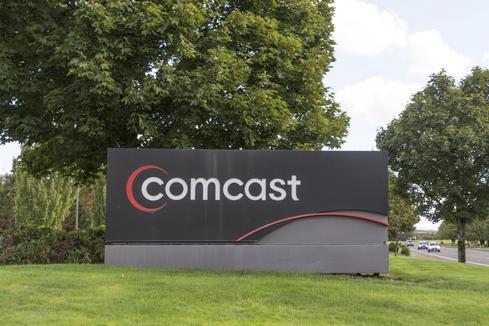Comcast Rolls Out DOCSIS 3.1 Network In Philly
Philadelphia is expected to benefit from Comcast's new DOCSIS 3.1 network, which can theoretically offer Internet upload speeds of 1Gbps.


Best Raspberry Pi, Arduino DIY Projects For Your Holiday Downtime
Best Raspberry Pi, Arduino DIY Projects For Your Holiday Downtime (Click image for larger view and slideshow.)
Homeowners in the City of Brotherly Love might have even a faster way to upload and download content from the Internet. On Dec. 22, Comcast announced that it would roll out a new network that promises gigabit speeds -- DOCSIS 3.1 -- in the Philadelphia area.
In a statement, Comcast wrote that this could be the first DOCSIS 3.1 network reaching residential customers. The company is still conducting tests, but it plans on bringing more residents onto the network by the end of 2016.
Here's how Comcast described the technology in its statement:
The next-generation technology that will deliver gigabit Internet speeds moved from the laboratory to the living room late last month when we installed what we believe to be the world's first DOCSIS 3.1 modem on a customer-facing network. At a home in the Philadelphia area, we took the next important step forward in delivering gigabit speed broadband over our hybrid fiber coaxial network.
In addition to Philadelphia, Comcast plans to extend the services to other locations in Pennsylvania, Northern California, and Atlanta.
DOCSIS (Data Over Cable Service Interface Specification) is the standard that allows cable companies to deliver Internet service over the same cable they use to deliver television. The latest version, DOCSIS 3.1, is backward-compatible with existing networks. That means no digging up streets or backyards to replace cable wiring.
No pricing for the service was announced.
This is more important as a technology test than it is a way to help someone in Philadelphia work faster. Comcast is using the standard cable connection already in the customer's house. There's no need for additional wiring.
Comcast acknowledged this when it said, "All we needed was a new modem, a software upgrade to the device that serves that neighborhood, and a few good engineers."
Wow.
If this test works out, the implications are huge.
Comcast customers will be able to get gigabit speeds with only a new modem and a software upgrade to the neighborhood distribution hardware. The labor-intensive and expensive cabling changes that might have been otherwise needed don't seem to be a factor.
Comcast had already previously trumpeted that this sort of thing was coming in 2016. However, to have a working and functional test bed this soon makes the company's claim that is it deployable in the near future seem far more realistic.
It also contrasts greatly with the Comcast has previously offered higher Internet speeds. For example, in Atlanta it has promised 2Gbps (double what it already offers there), but with wiring changes for fiber required. Customers would also have to be located near the fiber nodes. It was not clear how the DOCSIS approach would compete with or complement this 2Gbps service.
[Read about Comcast's issues with passwords.]
Google, naturally, is involved in the competition to take fiber to new locations. The search giant has announced expansion plans, and its Google Fiber is already live in Kansas City; Provo, Utah; and Austin. The expansion area will include 18 cities across four new metro areas: Atlanta, Charlotte, Nashville, and Raleigh-Durham.
But Comcast has done something truly different with the DOCSIS approach. The company has leveraged its existing network and delivered 1Gbps speed with minimal fuss. Comcast could be the first ISP in homes with this approach, and thus win the game before others get started.
**Elite 100 2016: DEADLINE EXTENDED TO JAN. 15, 2016** There's still time to be a part of the prestigious InformationWeek Elite 100! Submit your company's application by Jan. 15, 2016. You'll find instructions and a submission form here: InformationWeek's Elite 100 2016.
About the Author(s)
You May Also Like







